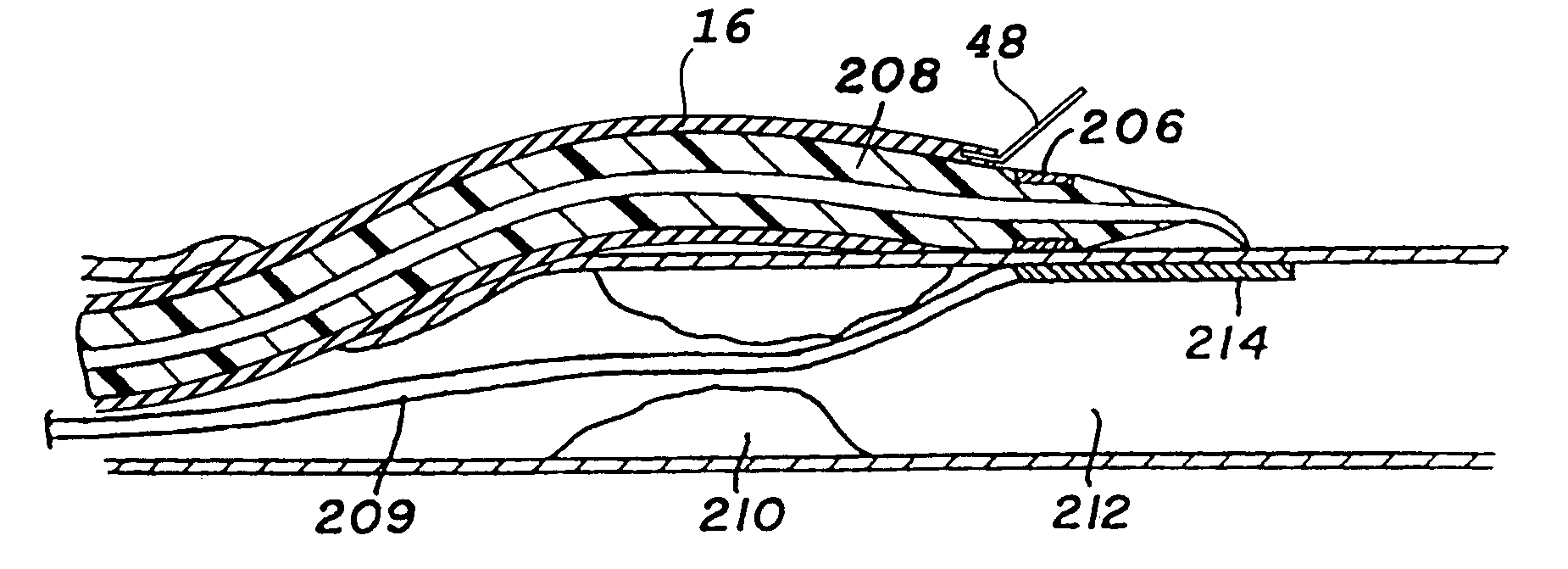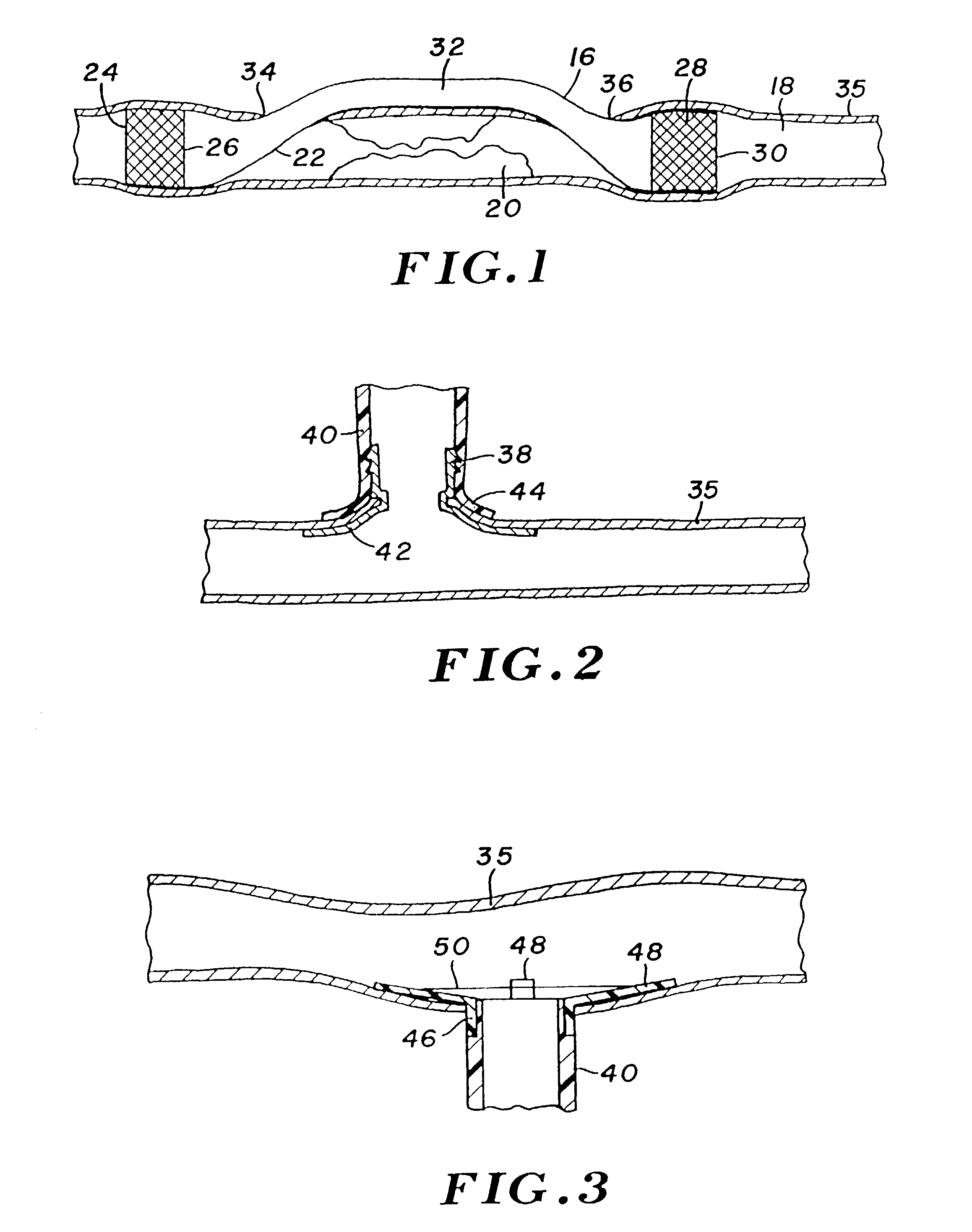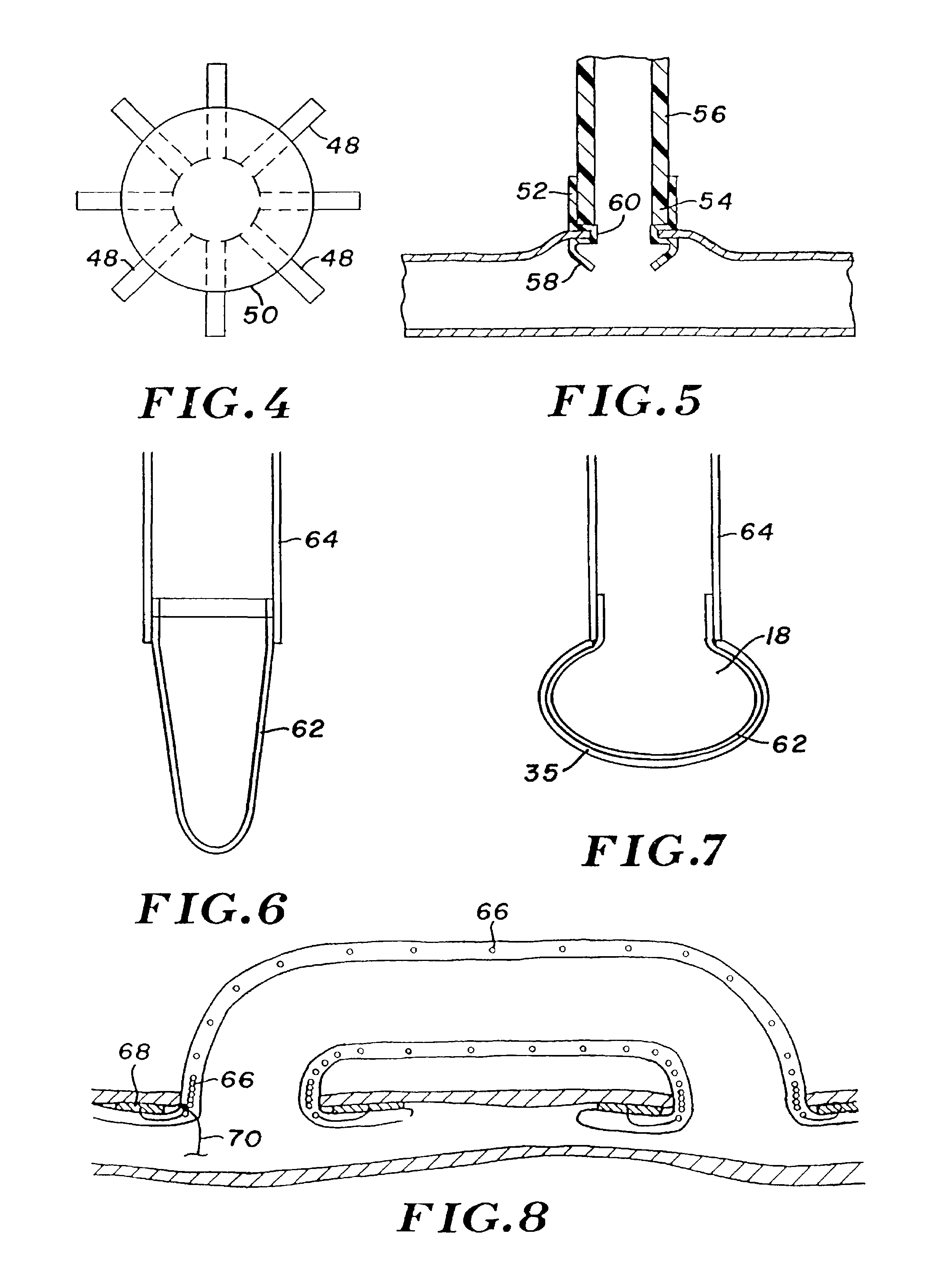Percutaneous bypass graft and securing system
- Summary
- Abstract
- Description
- Claims
- Application Information
AI Technical Summary
Benefits of technology
Problems solved by technology
Method used
Image
Examples
Embodiment Construction
[0042]Turning now to the drawings, there is shown in FIG. 1 a bypass graft 16 secured within a blood vessel 18, in a manner to bypass a lesion 20 within the vessel. Bypass graft 16 has a tubular wall 22 formed of a graft material, e.g., a polymer such as PTFE, urethane, polyimide, nylon, silicone, or polyethylene. The polymer may be extruded, blow molded, or dipped, and formed either directly into a tubing, or formed first as a sheet having opposed ends or edges bonded together to provide the tubular configuration. The edge bond can be formed by a variety of methods including ultrasonic welding, thermal bonding, sewing, adhesives, or with radio frequency (RF) energy. Alternatively, the graft can be a saphenous vein or other vessel from the patient.
[0043]At its proximal end 24, bypass graft 16 incorporates a radially expandable stent 26. The graft incorporates a similar stent 28 at its distal end region 30. Once graft 16 is deployed, the stents are radially expanded using a dilatatio...
PUM
 Login to View More
Login to View More Abstract
Description
Claims
Application Information
 Login to View More
Login to View More - R&D
- Intellectual Property
- Life Sciences
- Materials
- Tech Scout
- Unparalleled Data Quality
- Higher Quality Content
- 60% Fewer Hallucinations
Browse by: Latest US Patents, China's latest patents, Technical Efficacy Thesaurus, Application Domain, Technology Topic, Popular Technical Reports.
© 2025 PatSnap. All rights reserved.Legal|Privacy policy|Modern Slavery Act Transparency Statement|Sitemap|About US| Contact US: help@patsnap.com



